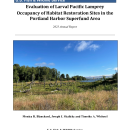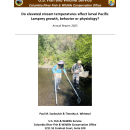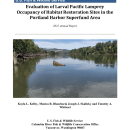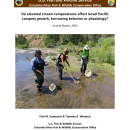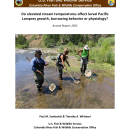
1211 SE Cardinal Ct
Suite 100
Vancouver, WA 98683
United States
About Tim Whitesel
Tim represents FAC on the Regional Bull Trout Advisory Group, helped initiate the Regional Science Of The Service annual event and serves on the current planning team, is a member of the national FAC Training & Employee Development Work Group, acts as an Associate Editor for Northwest Science, and is an Affiliate Professor at Portland State University.
Current Projects:
1. Contributing to Bull Trout recovery efforts
2. Contributing to Pacific Lamprey conservation efforts
3. Mentoring Pathways students
4. Serving as a member of the Science of the Service planning team
Past Projects:
1. Supervisory and collaborative roles
a. Salmon and Steelhead evaluation groups
b. Native Trout evaluation groups
c. Non-salmonid evaluation groups
d. Analytical services group
e. Recovery and assessment planning group
f. Fisheries management group
2. Served on the technical team for salmon and Steelhead recovery
3. Studied Western Pearlshell Mussel life history
Background:
Education- PhD in Biological Sciences from University of Rhode Islands, MSc in Zoology from University of Rhode Island, BA in Philosophy and BS in Biology from Fredonia State University
Professional- Oregon Department of Fish and Wildlife, Alaska Department of Fish and Game, Eastern Oregon University, Rutgers University and University of Rhode Island
At CRFWCO since: 2001
